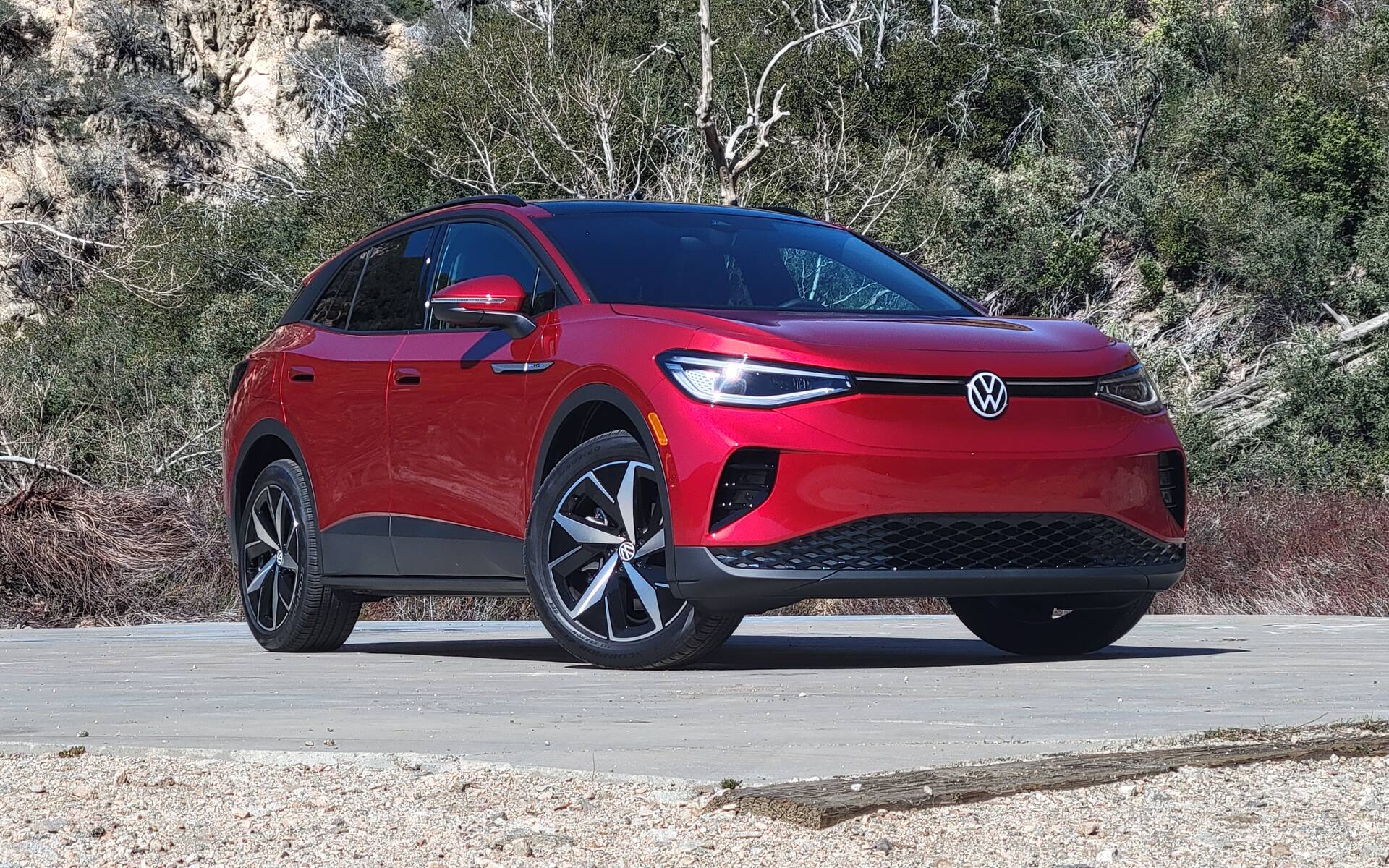2024 Volkswagen ID.4: More Powerful and Intuitive

| Strong points |
|
|---|---|
| Weak points |
|
While relatively new in automotive years, the ID.4 is oldish in EV years. A pioneer in the battery-powered V-Dub catalogue after the e-Golf, the ID.4 stands out for its spacious interior (in a relatively compact format), and its wide choice of possible configurations.
For the 2024 model year, this SUV remains aesthetically the same. But engineers have tweaked its underpinnings to make it more powerful and efficient. There’s also a new available infotainment system. The Car Guide travelled to Pasadena, California to drive the Volkswagen ID.4 2024.
Bigger Magnets
In terms of power storage, the choice of batteries remains the same as on the outgoing model, with one 62 kWh unit and another 82 kWh. Base models equipped with the smaller battery undergo few changes – and keep the same performance numbers at 201 hp and 229 lb-ft of torque.

The 82 kWh models, however, get a larger motor on the rear axle, enabling them to unleash 282 hp and 402 lb-ft of torque in rear-wheel drive configuration. All-wheel drive variants, meanwhile, can spit out up to 335 hp with the same torque. This represents an additional 81 hp for RWD models and 40 hp for AWD models. Range is also improved, with 468 kilometres for the rear-wheel drive version and 423 kilometres with all-wheel drive. The latter models can tow up to 2,700 lbs.
On the road, if the ID.4 doesn't deliver the signature VW driving dynamics you'd expect from the brand's gasoline-powered models, it provides all the elements you need for pleasant everyday driving, along with good visibility. You’ll feel its weight during spirited drives on winding roads, and its regenerative braking system doesn't allow for single-pedal driving.
On the other hand, it proves efficient for its size: we measured a fuel consumption of 17.7 kWh/100 km on a variable-elevation driving circuit - a reading consistent with the promised range on our AWD tester. With a maximum recharging power of 140 kW on models equipped with the 62 kWh battery and 175 kW on those with the 82 kWh battery, the ID.4 does well at the Level 3 station, but is not among the best in the field. In comparison, the Hyundai Ioniq 5 can achieve over 220 kWh.

New Infotainment Screen, Optional Heat Pump
Always comfortable and surprisingly spacious, the ID.4 offers 818 litres of cargo space in its normal configuration, and up to 1,818 litres when the rear seats are lowered.
While the Mustang Mach-E offers marginally more space in normal configuration and less with the seats folded down, rivals such as Hyundai's Ioniq 5 and the Kia EV6 are no match in this respect.

For 2024, models armed with the 82 kWh battery get a new 12.9-inch screen that's frankly improved compared to the outgoing model. A more intuitive interface, easier-to-use HVAC controls and (finally) illuminated touch-sensitive buttons on the bottom part are among the list of improvements. Volkswagen has also added a battery preconditioning component linked to the navigation system, which prepares the recharge before you arrive at the station. Although the manufacturer temporarily withdrew the availability of the heat pump for the previous model year, it is now offered again, but exclusively as an option. The standard heating element works, but can be energy-hungry when temperatures drop below freezing. But quantifying this loss really depends on how the car is used.
The Bottom Line
Problems with the 12 V battery, doors that can pop open when the vehicle is in motion, a frustrating infotainment system screen... the ID.4 has not been spared from technical boo-boos since its introduction. This year, the ID.4 retains its versatile and comfortable character, but Volkswagen has also worked hard on making it better and easier to use.

Of course, it’s more expensive (like everything else). With a starting price of $48,495 (excluding $2,100 for shipping and preparation), compared to $43,495 for the 2023 model, which had a slightly shorter standard equipment list. The rear-wheel-drive Pro S model with the larger motor and technical upgrades starts at $52,995, while the twin-engine, all-wheel-drive Pro AWD model will set you back $57,995.











